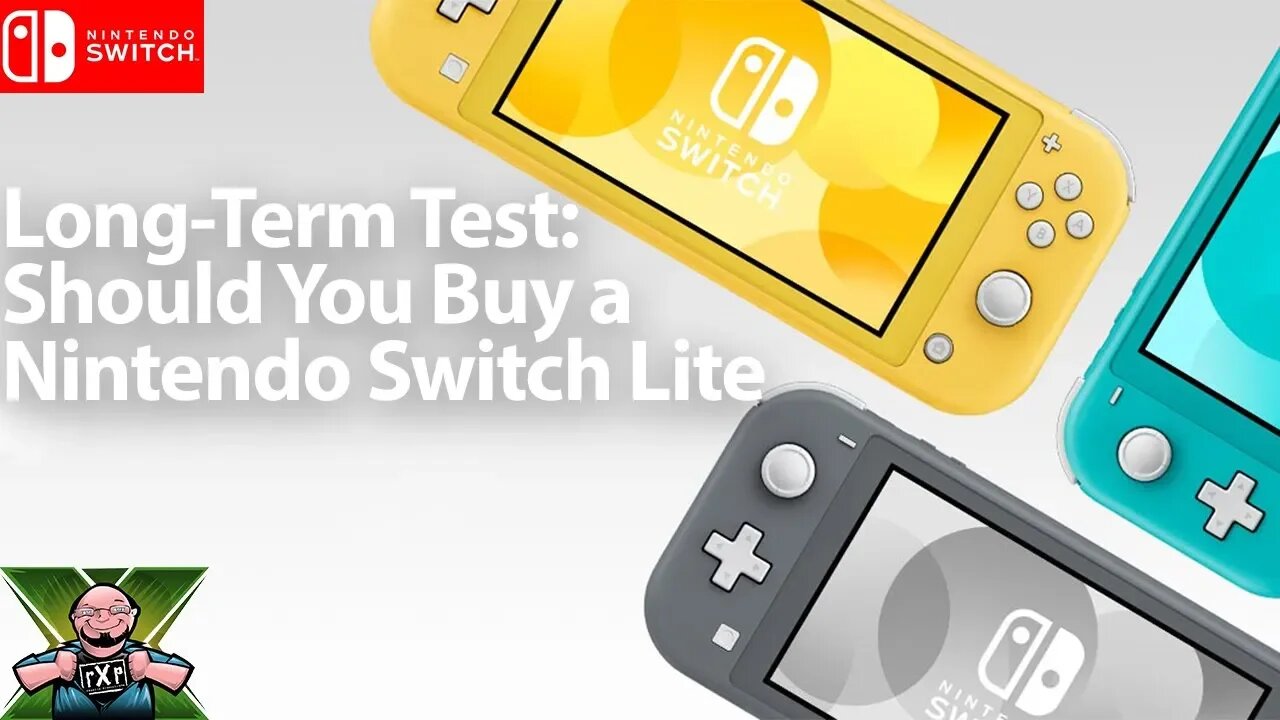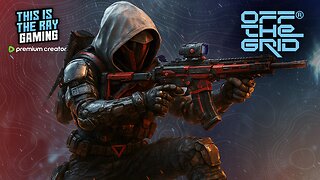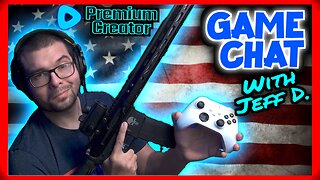Premium Only Content

Long Term Test - Would I Still Buy the Nintendo Switch Lite 5-Months After Launch?
In this video, we share our experiences after nearly 5 months of using the Nintendo Switch Lite, what we like, what could be improved, and whether you should buy this or a standard Switch.
When Nintendo first announced the Switch Lite, I was rather meh about it. I'm not a huge handheld gamer, I have a 3DS and New 3DS XL that just collect dust. I have a launch day Switch that I rarely play in handheld mode. But when the Switch Lite was released I picked one up. For my wife. Yeah, that's it.
There are some pretty significant differences between the original Switch and the Switch Lite. The biggest has to be the fact that the Switch Lite cannot be connected to a TV at all. I had theorized that Nintendo would just not include a dock and indicate that due to the smaller size it wouldn't fit in their dock. But no, they removed that circuitry from the system completely, so not even 3rd party docks will work. If connecting to your TV is at all important, the Switch Lite is not for you.
The Swich Lite also forgoes it's cousin's removable Joycon configuration, opting instead for a unibody/self-contained design. This delivers a handheld which is sturdier, has less flex, and is more comfortable to hold for long durations. In addition to the JoyCons being permanently attached, the left JoyCon now features a dedicated D-Pad, replacing the Up, Down, Left, Right buttons on regular JoyCons. This is a welcome upgrade, as the D-Pad feels great, it's responsive, and just works better than the buttons of the original.
Two big omissions in the system are also related to the JoyCons. HD Rumble isn't present, nor is the IR Camera. To remedy the lack of an IR camera, the Switch Lite has an improved gyro for when you are playing games that provide inputs via tilting the system. HD Rumble, however, is another story. It's not here, in any form, and that does negatively affect gameplay in certain situations. In Mario Odyssey, for example, the HD Rumble would normally vibrate to indicate if you were near certain items. That is missing from the Switch Lite, and that's a bummer.
The displays are not only different sizes between the 2 systems, but also different Pixel Densities. The Switch Lite packs in an extra 30-pixels or so per inch, making things look crisper and cleaner. The resolution is the same at 1280x720, and in most situations, it looks great. While the display is a little more than 1/2 inch smaller, it still is a pleasurable screen to look at while playing.
Why it RoX:
- Amazingly comfortable
- Better battery life than the launch Switch
- 5 color options
- D-pad replaces buttons on left JoyCon
- Higher PPI display
- Better for those with smaller hands
- Plays almost the entire Switch Library
- Compatible with most Switch accessories
What could be Improved?
- No option to connect to a TV
- No HD Rumble
- No Bluetooth headphone support
- Standard Switch delivers a better value
- Only 32GB onboard storage (expandable)
- Charging Stand sold separately
Should You Buy One?
If you are primarily a handheld gamer and want to get into the Switch Family of systems, the Switch Lite is awesome. It is so comfortable to hold and play it puts the original to shame. If, however, you have any desire to connect your Switch to your television at any point, this is not the system for you. At only $100 less than the standard Switch, the value in the larger system makes it the better buy for most people. However, you can take that $100 savings and invest in a few games and a year of Nintendo Online and be up and gaming.
#Switch #SwitchLite #Nintendo
The footage used in this review are used under the Fair Use laws, referenced below:
https://www.law.cornell.edu/uscode/text/17/107
Notwithstanding the provisions of sections 106 and 106A, the fair use of a copyrighted work, including such use by reproduction in copies or phonorecords or by any other means specified by that section, for purposes such as criticism, comment, news reporting, teaching (including multiple copies for classroom use), scholarship, or research, is not an infringement of copyright. In determining whether the use made of a work in any particular case is a fair use the factors to be considered shall include—
(1) the purpose and character of the use, including whether such use is of a commercial nature or is for nonprofit educational purposes;
(2) the nature of the copyrighted work;
(3) the amount and substantiality of the portion used in relation to the copyrighted work as a whole; and
(4) the effect of the use upon the potential market for or value of the copyrighted work.
The fact that a work is unpublished shall not itself bar a finding of fair use if such finding is made upon consideration of all the above factors.
(Pub. L. 94–553, title I, § 101, Oct. 19, 1976, 90 Stat. 2546; Pub. L. 101–650, title VI, § 607, Dec. 1, 1990, 104 Stat. 5132; Pub. L. 102–492, Oct. 24, 1992, 106 Stat. 3145.)
-
 12:21
12:21
RoXolidProductions
1 year ago $0.03 earnedALL-NEW Nintendo Switch, DS & 3DS Game & System Cleaning Kits!
2314 -
 2:04:21
2:04:21
vivafrei
1 day agoEp. 278: D.C. Peace Wave! Big Tish & Nipple Judge SPANKED! "Maryland Man" Trafficker FREE & MORE?
79.1K96 -
 LIVE
LIVE
Damysus Gaming
1 hour agoBorderlands 3 - Part 8 - FL4K Time | Children of the Vault be Warned!
55 watching -
 LIVE
LIVE
Patriots With Grit
5 hours agoWhat You Should Know About Harmful Vaccine Ingredients And What To Say To Your Doctor, Pediatrician, Health Department or School When They Pressure You, Your Kids Or Your Family Members | Dr. Bryan Ardis, D.C.
299 watching -
 LIVE
LIVE
This is the Ray Gaming
1 hour agoSunday Night Live with the Boys | Rumble Premium Creator
39 watching -

ItsMossy
2 hours ago🍃NEW MIC WHO THIS🍃DRIVING SIM GO BRRR🍃420 SESH🍃
2.06K -
 LIVE
LIVE
THOUGHTCAST With Jeff D.
1 hour agoSunday night Fortnite With ScottishVikingGaming & crew
19 watching -
 LIVE
LIVE
a12cat34dog
2 hours agoSOLID DAWG RETURNS :: METAL GEAR SOLID :: 1998 IS UNFORGIVING {18+}
62 watching -
 4:02:55
4:02:55
yellow_1ron
4 hours agoGAMING WITH THE HOMIES JOIN UP | JOIN!
7.07K -
 1:52:25
1:52:25
JohnnyDrop
3 hours agoJOHNNY DROP | Let's get to 100 Followers | Warzone / PGA / Question of the Day
6.05K1